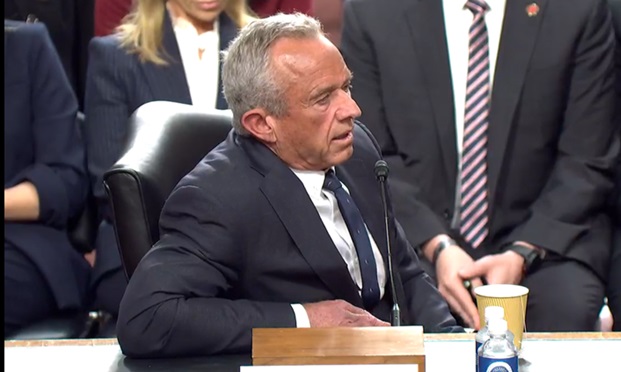INDIANAPOLIS -- The American health care system may have a myriad of problems, but health care expert Aaron Carroll said we sometimes make the issue more complicated than is needed.
Carroll, who is the director of the Center for Health Policy, Indiana University School of Medicine, served as the opening keynote yesterday at the BenefitsPRO Broker Expo in Indianapolis.
“Think about health care as the iron triangle,” said Carroll.
That iron triangle draws its strength (and weaknesses) in the answers to three questions: how much coverage costs; how good is the coverage; and, how well do people get access.
“If anyone promises they can improve all three, they are either lying or a politician or both,” said Carroll.
The three-legged stool of health care
The U.S. did not invent universal health care out of thin air, Carroll said. “The vast majority of developed countries offer universal coverage. The U.S. remained alone in not offering it along with Chile, Turkey and Mexico.”
The Affordable Care Act made its promise on the idea of a three-legged stool, stated Carroll.
-
Everyone should be able to get insurance even if they have a pre-existing condition.
-
To prevent people from gaming the system. They need to buy insurance even if they are healthy.
-
To make sure everyone can afford the insurance, many people will be given tax credits to help offset the costs.
“For it to work,” said Carroll. “We need all three legs of the stool. This is how all of the countries with universal health care make it work. They all start with a similar model in mind.”
In making his case about America’s woes, Carroll submitted a series of slides comparing the U.S. health care system to other countries who are members of the OECD (Organisation for Economic Co-operation and Development). After looking at the results, let’s just say, thank you, Canada.
Access to health care
At least in one measure, the ACA has worked. “We have reduced the number of uninsured to an all-time low,” Carroll said.
But that’s only one way to measure the success of the ACA. A 2016 Commonwealth Study looked at a myriad of health topics that often placed the U.S. in an unfavorable light.
Take the percent of people unable to get a same day appointment when sick. The U.S. was second last, just above Canada. Half of Americans cannot get a same-day appointment when sick.
Cost, however, is the biggest barrier to access, and that barrier stretches across socioeconomic lines. About one-third of all Americans neglect care because of costs. The richer half of Americans are more likely to forego filling a prescription or going to a doctor when compared to the poorest people in other OECD countries.
While health care spending growth has slowed in the U.S. the last few years, it remains two to three times above what other countries spend.
“The U.S. is off the charts,” said Carroll. “Access is not great and much of that is because costs are sky high.”
Quality of health care
“How do we define quality of care?” asked Carroll. “One way is looking at the number of doctors per 1,000 people.”
The U.S. has a below average number of doctors when compared to the OECD members. Only Greece and Hungary fall below the U.S. numbers. Carroll said we’re turning out fewer graduates and becoming more and more reliant on foreign-educated doctors to fill our health care needs.
Another way to measure the quality of care is by looking at mortality rates and how we treat disease.
“We fare well when talking about the U.S. mortality rate from breast cancer and prostate cancer,” said Carroll. “But we are terribly low when looking at lung cancer. We are also very low when looking at heart disease.”
The U.S. also falls well below the average when looking at life expectancy versus health care spending. “We should be the best in the world at health care based on our spending,” he said. “But we’re not. We’re not even close and we’re stuck with an irrational system where we pay a lot of money and are not getting a return on our investment.”
Outlook for health care reform
According to Carroll, we knew the direction, for better or worse, of where we were going under the ACA. With the recent presidential election, now, he said, all bets are off.
The GOP controls the House, the Senate and the White House and change of some kind seems certain. Carroll said one of four options could be coming down the pike:
-
Option 1: Repeal through reconciliation
-
Option 2: Repeal and replace
-
Option 3: Executive action
-
Option 4: Cassidy-Collins Bill
Option 3, Carroll said, is not gaining enough coverage from the media, but the option that may have the best chance to make waves this year.
“The ACA isn’t as prescriptive as people think,” he said. “Birth control is one example. The ACA doesn’t demand that it be covered. It delegates that decision to the HHS secretary.”
Carroll added that other factors fall into this grey area. “What exactly is an essential health benefit? What is a preventative service? When you begin digging into health care issue, there’s a lot of leeway and a lot of room where Trump could enact changes without changing the whole thing.”
But anyone who thinks they know what will happen is fooling themselves, said Carroll. “There is still so much in flux. Anyone who tells you they know what will happen is lying.”
© 2025 ALM Global, LLC, All Rights Reserved. Request academic re-use from www.copyright.com. All other uses, submit a request to asset-and-logo-licensing@alm.com. For more information visit Asset & Logo Licensing.







